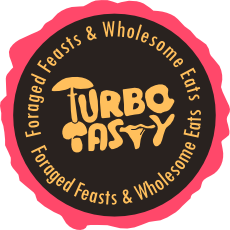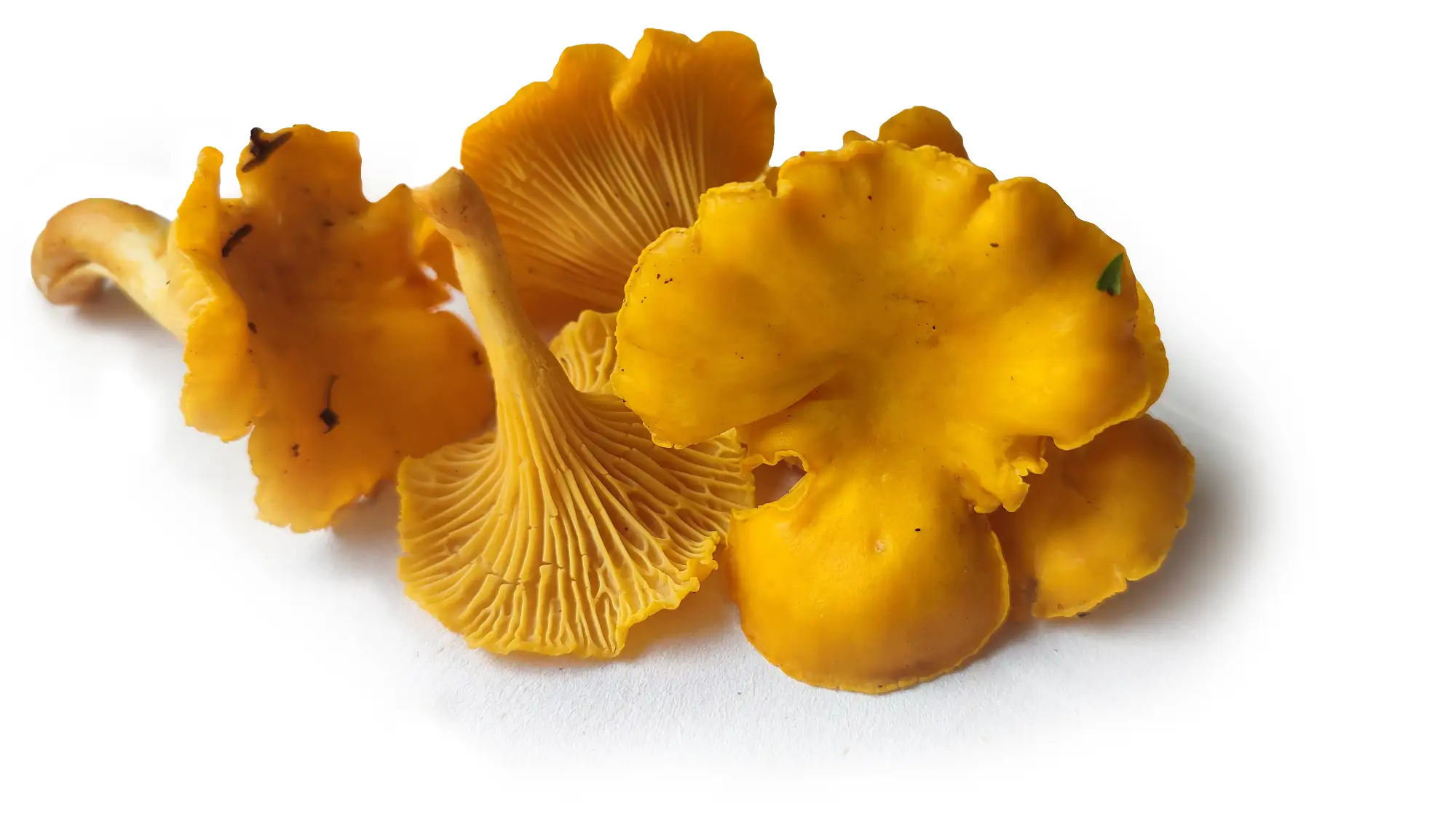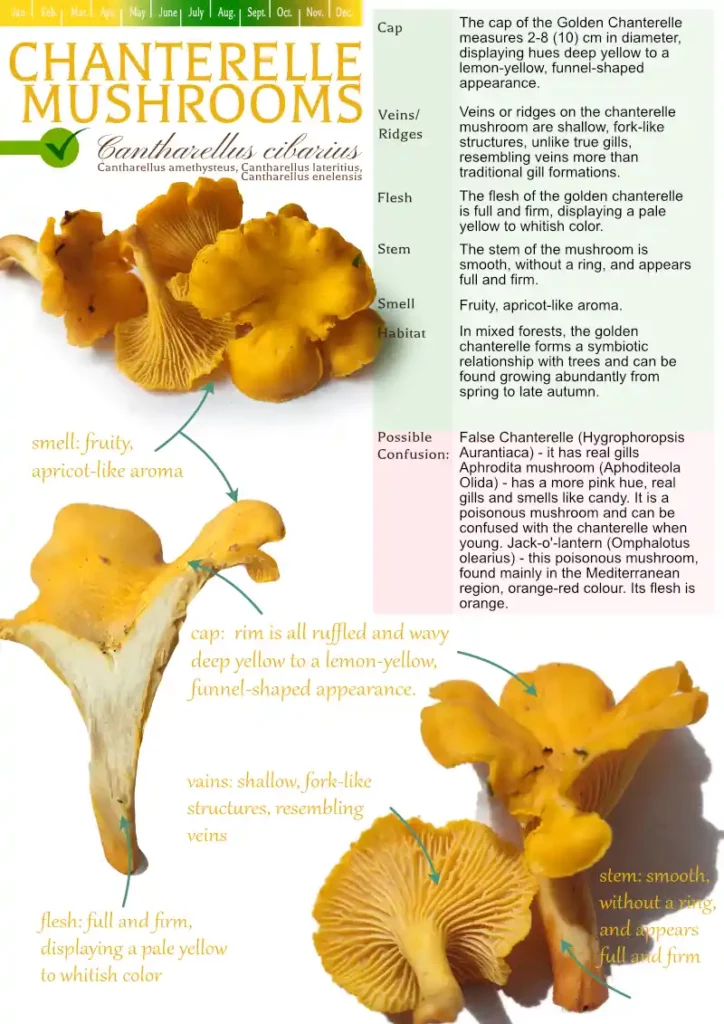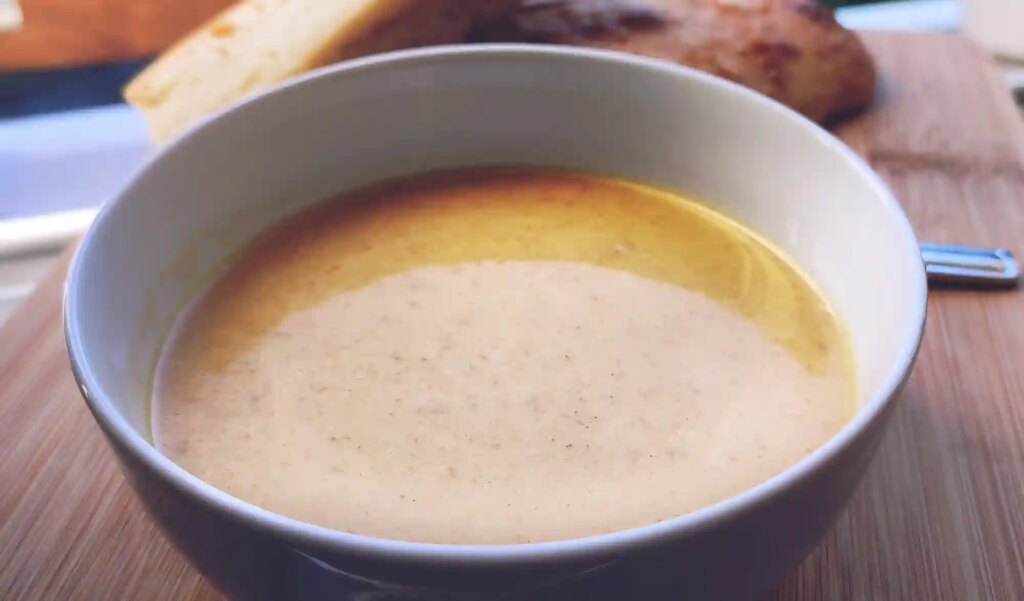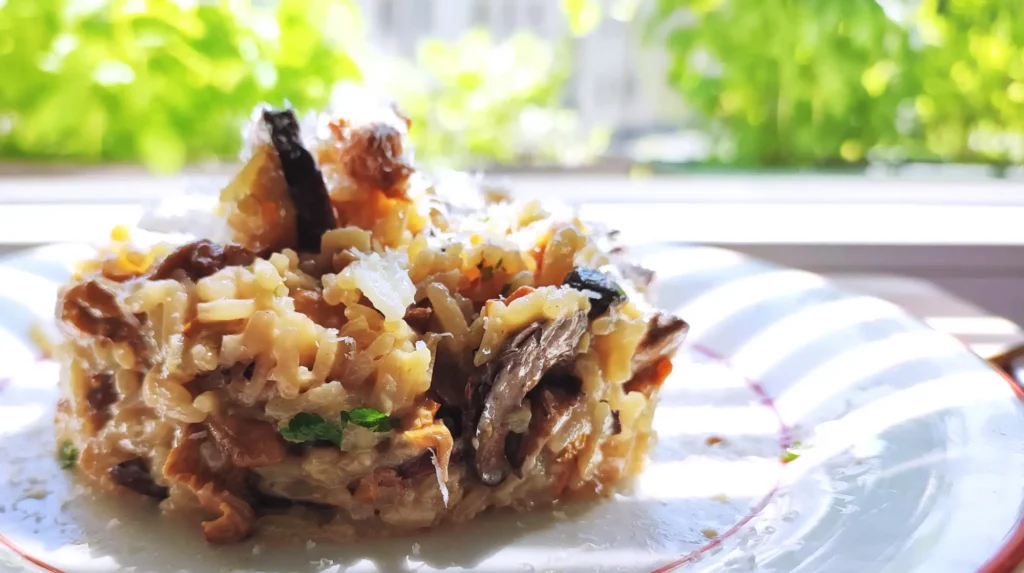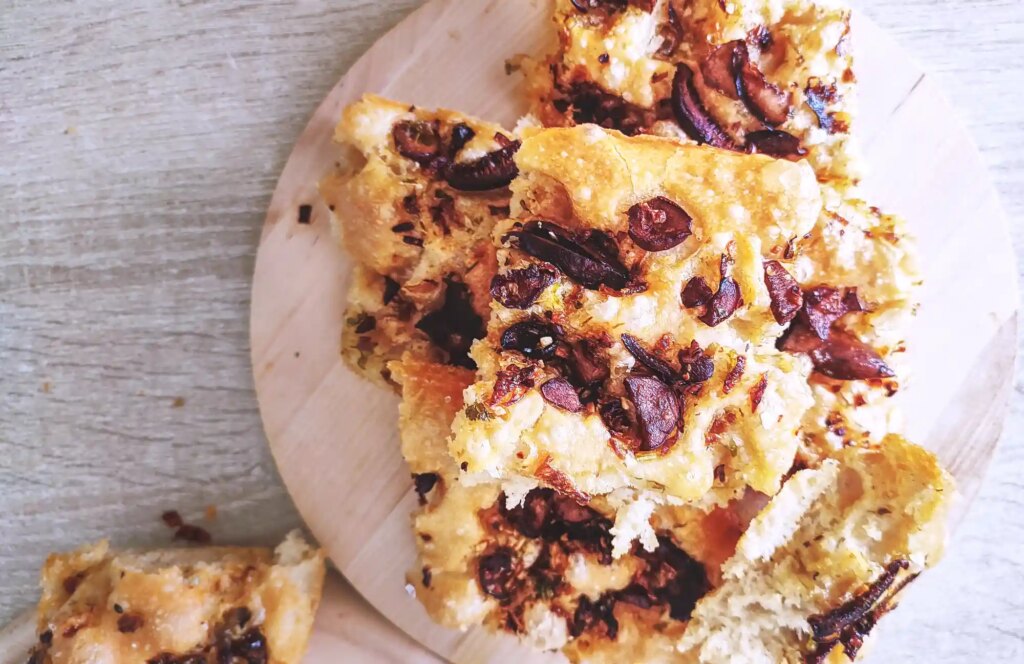The chanterelle mushrooms (Cantharellus cibarius, Cantharellus amethysteus, Cantharellus lateritius, Cantharellus enelensis and many others) are an edible species of wild mushroom that falls under the Latin name Cantharellus. Mainly golden yellow in colour, these exquisite mushrooms also come in a variety of white and bright orange.
But it is the golden chanterelle mushroom that stand out, attracting enthusiastic seekers to the forest. Despite their allure, the classification of chanterelles remains somewhat uncertain, as mycologists have discovered a whole range of more than thirthy different species.
Table of Contents
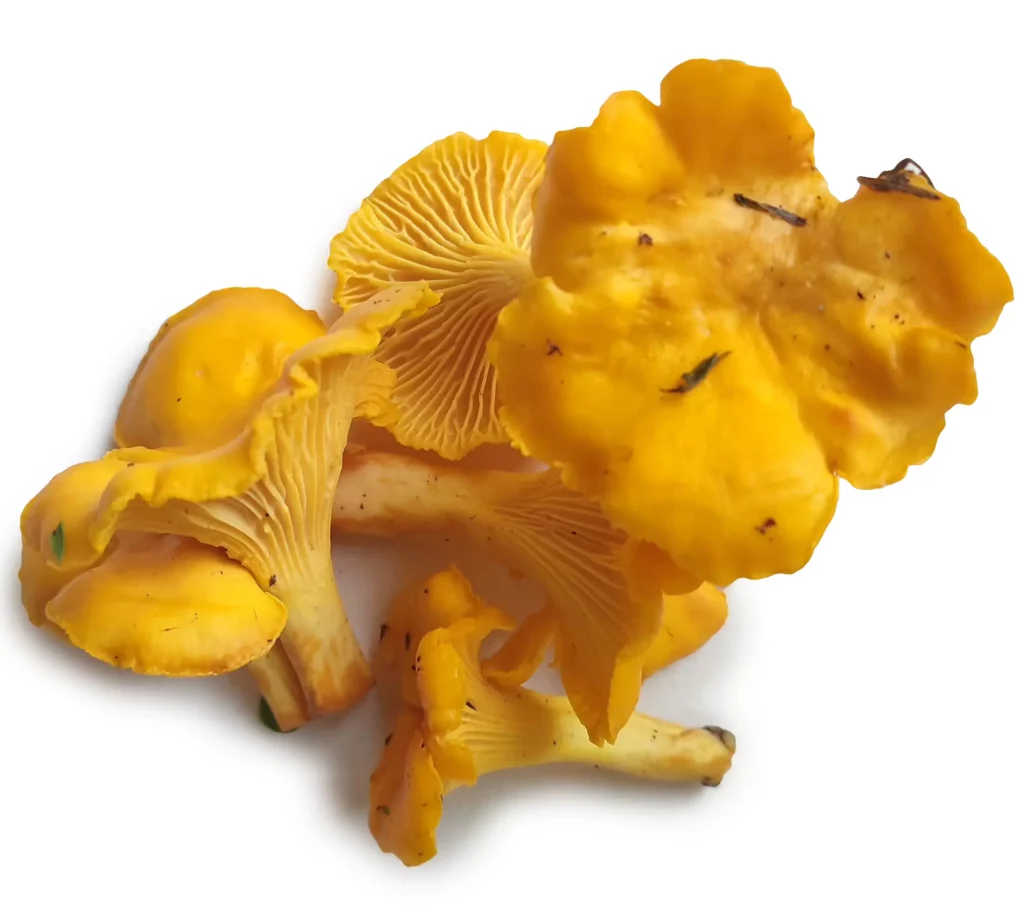
You’ve probably seen chanterelles in the supermarket and noticed their rather high price. They’re definitely worth it, but you don’t have to buy them as they’re easy to find in the forest.
I know mushrooms aren’t for everyone, but if you’re looking to start foraging chanterelle mushrooms are a great place to start. Their flavour is delicious – it’s like a fruity, peppery combination that’s very different from the usual shop-bought mushrooms.
Chanterelles have all sorts of fun nicknames, like girolle, egg mushroom, and some people just call them plain old ‘chanterelle’. Pretty cool, isn’t it?
Let’s take a closer look 🙂
The Enchanting World of Yellow Chanterelle Mushrooms
Can Chanterelles be Consumed Raw? How Long Should We Cook Them?
The golden chanterelle is a delicious edible mushroom that clearly secures its place in the pantheon of safe and tasty mushrooms.
I’ve heard that people tend to eat them raw, as well as porcini and some other mushrooms. But because there is so much unknown about the mushroom world, and because there have been so many changes since scientists began to study mushrooms on the basis of DNA, I would never advise anyone to eat raw mushrooms of any kind. The process of sautéing, grilling or combining them in soups and sauces unlocks their rich and complex flavours. By gently cooking them for 5-6 minutes, the desired tenderness is achieved.
How do you recognise a chanterelle mushroom?
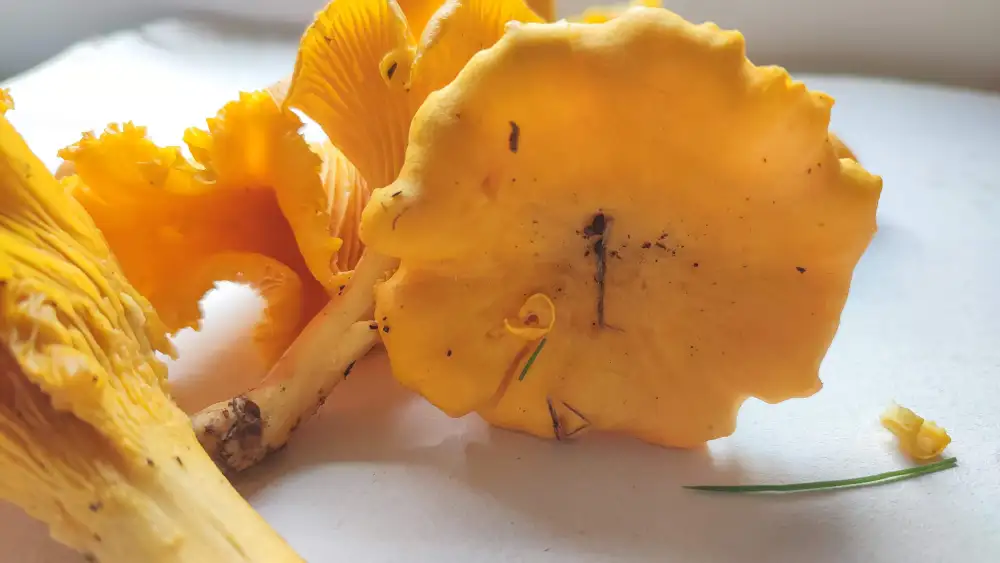
Luckily, chanterelles have some distinctive features that make them easy to spot when you’re out foraging. Their caps have a funnel or vase shape. And the rim is really pretty – all ruffled and wavy. Mainly golden yellow, these exquisite mushrooms also come in various shades of bright orange.
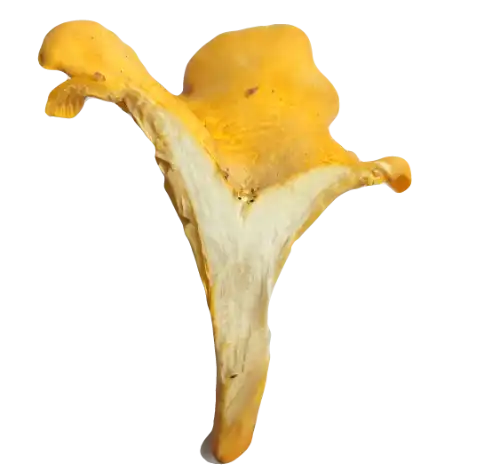
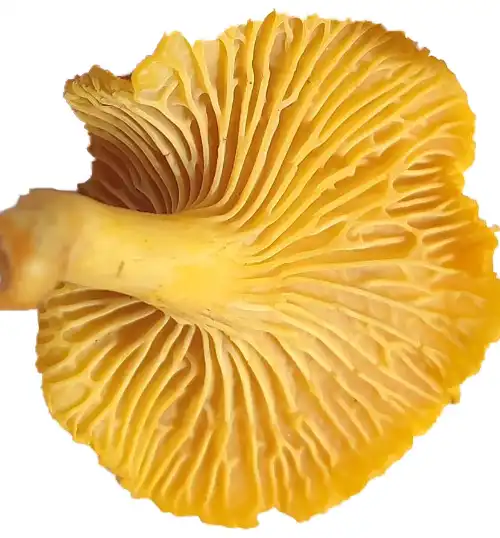
Under the cap, instead of the gills that many mushrooms have, chanterelles have veined ridges (false gills). And the stalks are nice and smooth, without a ring.
The golden chanterelles form a symbiotic relationship with trees and you should look for them and explore deciduous and coniferous forests.
Chanterelles are celebrated for their exquisite taste, often described as a harmonious blend of fruity and peppery flavours. When cooked, chanterelles develop a tender, meaty texture that goes well with a variety of dishes, making them a popular choice in gourmet cuisine.
Foraging for Yellow Chanterelle Mushrooms
How can I pick chanterelle mushrooms in a safe way?
Chanterelles have some look-alikes, including the false chanterelle, which is poisonous. To safely forage for chanterelle mushrooms, it is important to learn how to distinguish them from other similar looking species (check table for reference). Always consult reputable field guides, seek the advice of experienced foragers and, when in doubt, leave it alone.
Foraging for chanterelle mushrooms can be a rewarding experience, but it’s important to follow some safety guidelines. Make sure you only collect mature specimens, leaving young or damaged mushrooms behind to allow them to spread spores and continue to grow. Remember to respect the natural environment and avoid damaging the ecosystem when foraging.
Characteristics and Identification of Yellow Chanterelle Mushrooms
| Parts | Description | Speed Check |
|---|---|---|
| Cap | The cap of the Golden Chanterelle measures 2-8 (10) cm in diameter, displaying hues deep yellow to a lemon-yellow, funnel-shaped appearance. | Funnel-Vase shaped appearance, wavy rim |
| Veins/ Ridges | Veins or ridges on the chanterelle mushroom are shallow, fork-like structures, unlike true gills, resembling veins more than traditional gill formations. | No gills, it has veins(ridges) that are difficult to remove both from its cap and stem. |
| Stem | The stem of the mushroom is smooth, without a ring, and appears full and firm. | Stem is full and firm, when cut in half, has a whitish color |
| Flesh | The flesh of the golden chanterelle is full and firm, displaying a pale yellow to whitish color. | Full and firm, has a whitish color |
| Taste/Smell | Fruity, apricot-like aroma. | |
| Habitat | In mixed forests, the golden chanterelle forms a symbiotic relationship with trees and can be found growing abundantly from spring to late autumn. | |
| Possible Confusion | False Chanterelle (Hygrophoropsis Aurantiaca) – poisonous, it has real gills and the gills are also easily movable and detachable from the flesh, – Aphrodita mushroom (Aphoditeola Olida) – has a more pink hue, real gills and smells like candy. It is a poisonous mushroom and can be confused with the chanterelle when young. This is why you should be careful when picking baby mushrooms and only pick fully formed fruits. Jack-o’-lantern (Omphalotus olearius) – this poisonous mushroom, found mainly in the Mediterranean region, has few forked gills and a darker, orange-red colour. Its flesh is orange, not white. | Lookalikes have gills and don’t have whitish full and firm flesh. |
Best Way to Cook Chanterelle Mushrooms:
Culinary Uses and Recipes Featuring Yellow Chanterelle Mushrooms
Chanterelle FAQ
When should you not eat chanterelles?
You should not eat chanterelles if they are spoiled, have a strong, unpleasant odour or if you are unsure about their identification. You should also avoid eating chanterelles that have been found in polluted or mouldy areas.
As with any food, people can be allergic to mushrooms, too.
To make sure you are not allergic, always introduce any new type of mushroom to your diet slowly. Eat a smaller portion at first to rule out any possible allergic reactions.
What is the best way to prepare chanterelles?
The best way to prepare chanterelles is to clean them thoroughly, sauté them in butter with garlic or other herbs and serve them as a garnish or topping for pasta, risotto or grilled meats. They can also be added to soups, stews or omelettes for extra flavour. Check out the many chanterelle recipes on Turbo Tasty. One of my favourites is ravioli stuffed with chanterelles.
Do you eat chanterelle stems?
Yes, chanterelle stems are edible. They have a slightly firmer texture than the ‘caps’, but are still tasty and nutritious.
Can you mistake chanterelles?
Chanterelles can be mistaken for other mushrooms, such as false chanterelles or Jack-o’-lantern, which are poisonous look-alikes. To avoid any risks, it is crucial to be confident in your mushroom identification skills or seek expert advice before consuming wild mushrooms.
Are chanterelles healthy?
Chanterelles are a healthy food choice. They are low in calories, high in fiber, and abundant in vitamins and minerals. These mushrooms are a nutritious addition to any diet because they also contain antioxidants and anti-inflammatory compounds. Read more about them in the FAQ below.
Potential Health Benefits of Yellow Chanterelle Mushrooms
Antiviral properties
Studies have shown that chanterelles contain bioactive compounds that have antiviral properties. So eating these mushrooms could potentially help your immune system fight off viruses and infections.
Full with antioxidants
On top of that, chanterelles are full of antioxidants like vitamin C and vitamin E. Antioxidants are amazing because they help neutralize free radicals that can damage your cells over time. So golden chanterelles may help protect your body in that way.
Anti-cancer abilities
Some research has also hinted that certain compounds in chanterelles could have anti-cancer abilities! These compounds may inhibit or prevent the growth of cancer cells, although further research is needed to fully understand their mechanisms of action.
Abundance of Vitamins and Minerals
These mushrooms are just bursting with essential vitamins and minerals like vitamin D, B vitamins, potassium, and copper. All those nutrients are so important for keeping your bones strong and immune system in tip top shape.
So when you forage for chanterelles, you’re not only getting a wildly delicious ingredient. You’re also grabbing a powerful health boost from Mother Nature! It’s a win-win. Just remember to be safe and responsible when mushroom hunting so we can keep enjoying these forest gems.
Interesting links:
https://www.mushroom-appreciation.com/chanterelle-mushrooms.html
https://www.123pilzsuche.de/daten/details/Pfiffi.htm
https://outdooradventures.wp.tulane.edu/2020/08/12/confidently-foraging-chanterelles/
https://www.wildfoods.ca/blogs/main/learn-about-chanterelle-mushrooms
